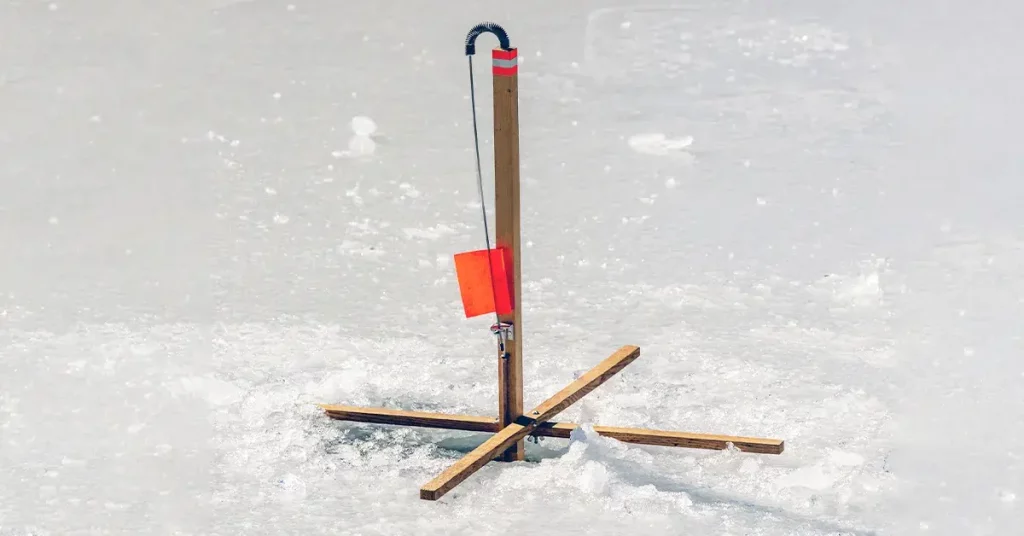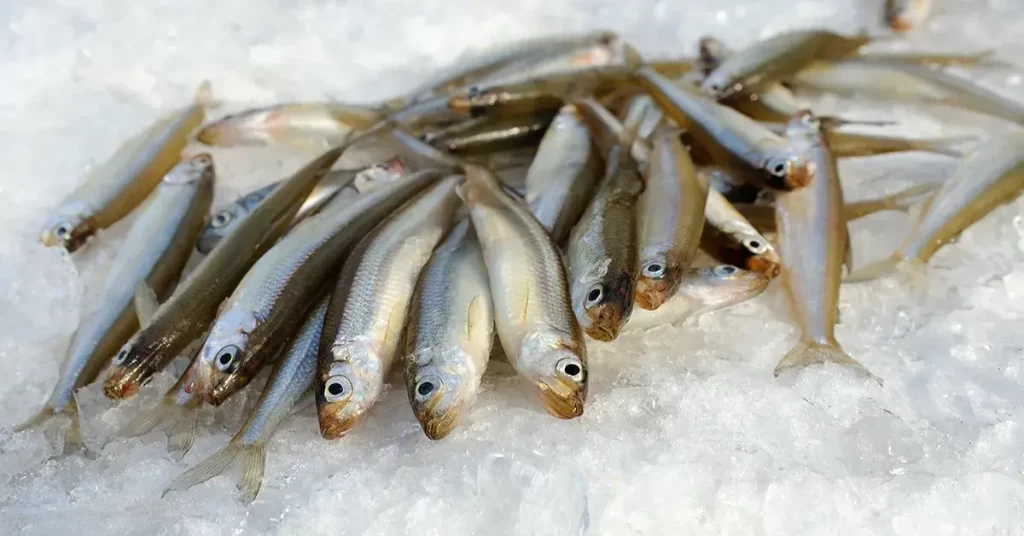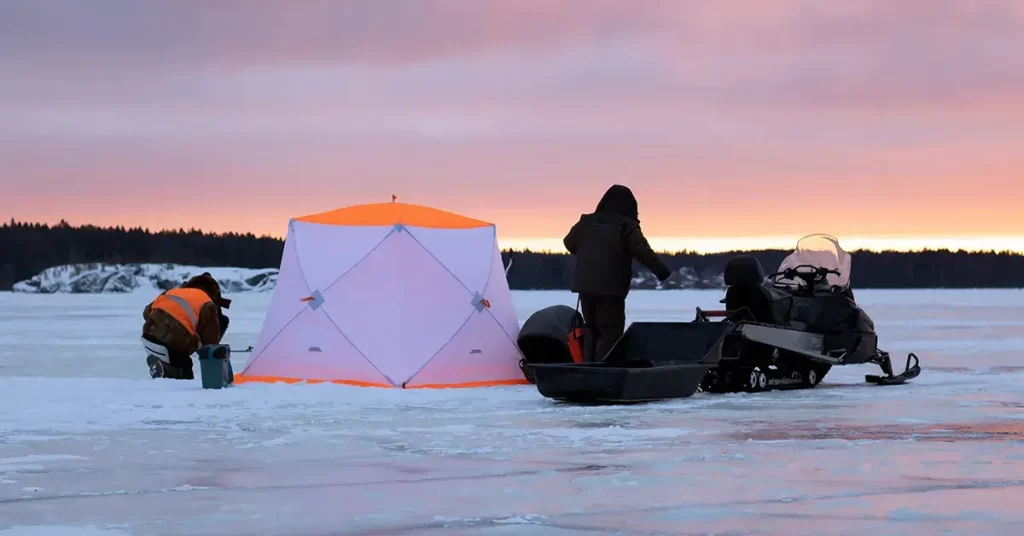Tips up get a bad rap from some ice anglers – after all how hard can it be to sit on your butt and wait for a flag to pop up! While it may not be as hands-on as fishing with a rod and reel, ice fishing with tip ups presents its own set of challenges and is a highly rewarding way to score a trophy fish.
Tip ups are also an excellent way to cover a lot of area in a short period of time. Deploying several tip ups at different locations will give you the ability to scout the potential of a given spot, so you can test the waters without waiting rod-in-hand at a single hole.
Everything from monster pike to walleye and bluegill can be caught using tip ups, and when deployed strategically, they can be a fantastic way to cover more ground and catch more fish!
Selecting the Right Tip Ups
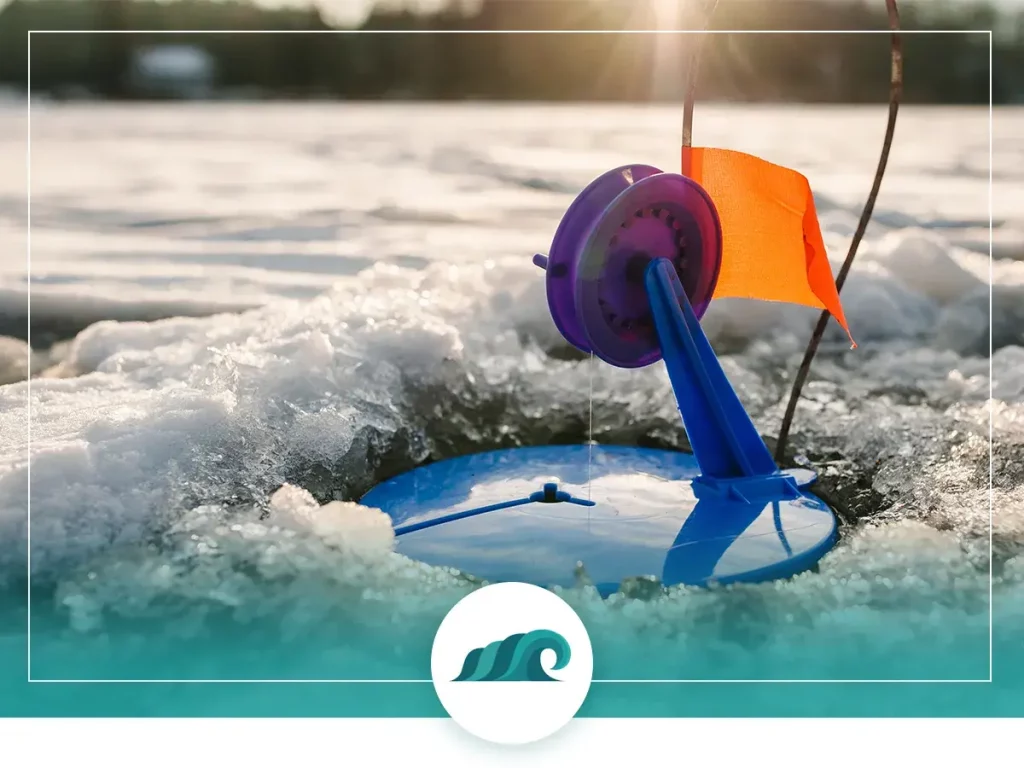
Tips ups vary significantly in terms of design and effectiveness. Everything from old-school cross-stick designs, to newer insulated ‘thermal-style’ tip ups can be used effectively, although newer designs have several advantages over their older counterparts.
Thermal tip ups feature round bottoms that completely cover the ice hole. This has two distinct advantages over other designs.
Firstly, it significantly slows ice holes from freezing over, so you won’t need to make the rounds opening up frozen over holes with an ice chisel as often. Secondly, by covering the entire hole, sunlight is unable to penetrate into the water below. This can be helpful when fishing for easily spooked fish – particularly in the early morning hours.
Whatever tip up style you choose, you’ll want to get one that’s freeze proof and stable enough to handle windy, snowy conditions.
Location
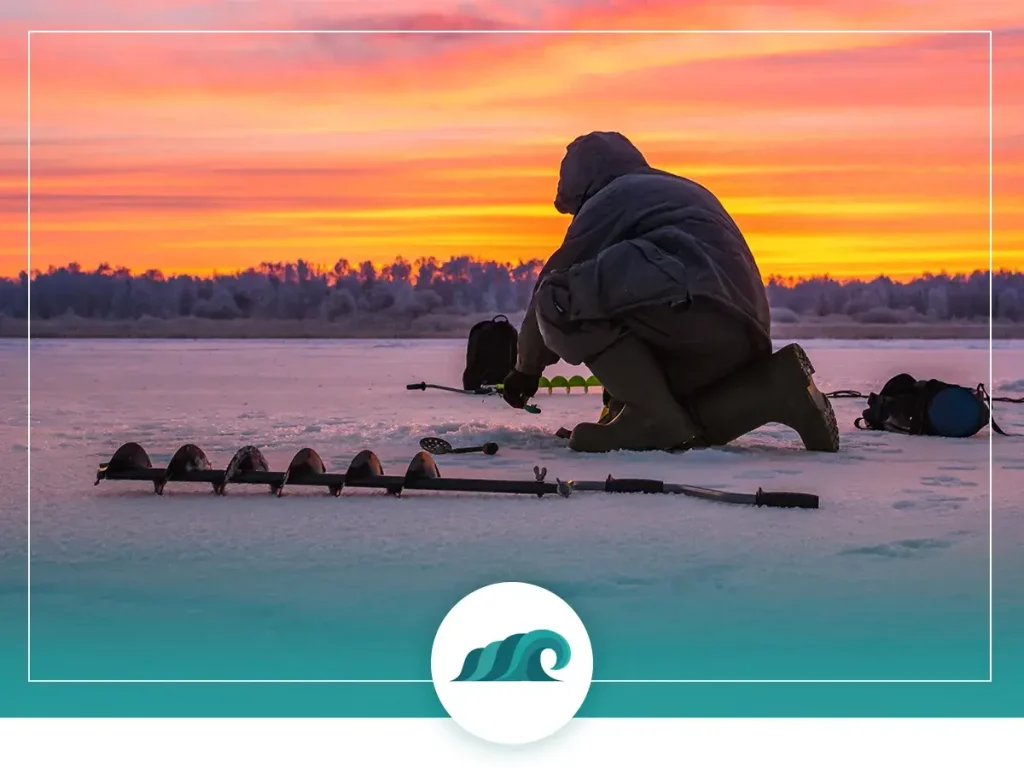
Perhaps the greatest advantage of tip ups is their ability to hook fish on their own. This means you’ll be able to cover more ground and find the bite faster than babying a rod and reel over a single hole.
But where should you deploy your tip ups?
Putting some thought and legwork into finding the most promising locations will greatly increase your odds of a successful outing. Use a GPS unit with contour mapping to find structures like drop-offs, weed beds, reefs, points that are likely to contain more fish.
A fish finder/flasher will also make figuring out what’s going on under the ice much easier – so you’ll know how the fish are reacting to your lure, and fine-tune any necessary adjustments.
If your location allows for fishing with multiple tip ups, then you’ll want to space out your holes by about 30 – 40 yards. This will increase your odds of hitting a productive spot while minimizing the odds of missing a honey hole.
Hole Drilling
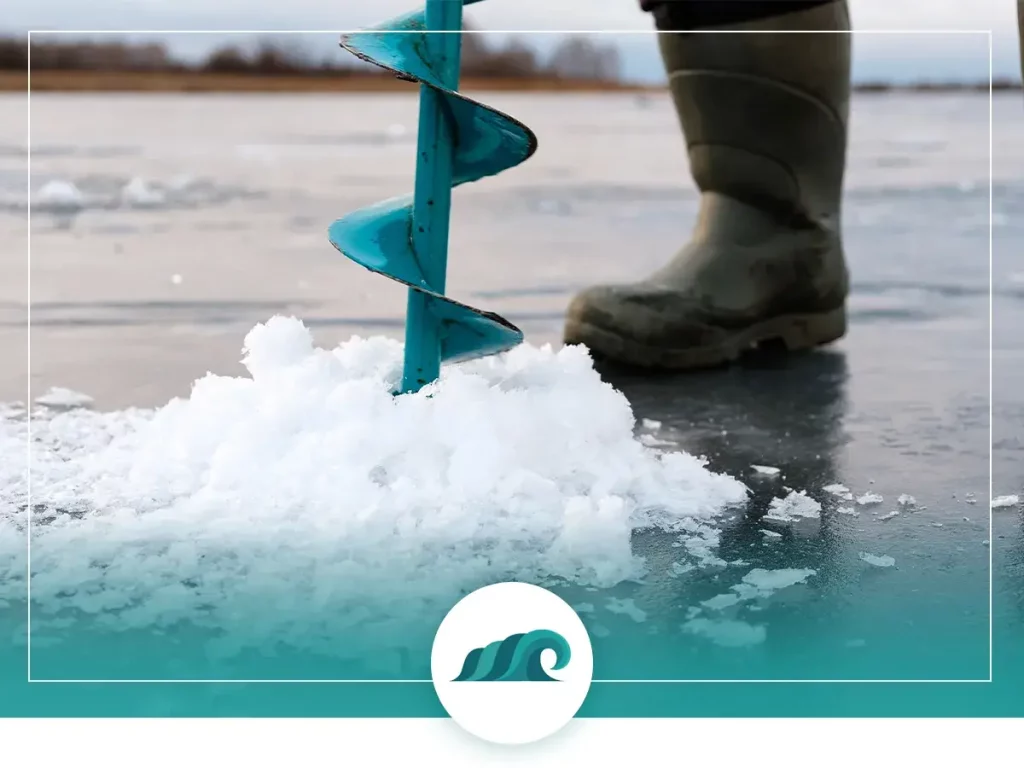
Once you’ve got your tips and locations mapped out, you’ll need to get down to the work of drilling some holes through the ice.
Like other ice fishing, you can use either a manual or an electric ice auger, but if you’re planning on covering a lot of ground, I’d recommend upgrading to electric.
A good electric auger can tear through foot deep ice in seconds, and drill well over 100 holes on a single charge. Even the best manual auger pales in comparison to this drilling speed and capacity.
Most tips are designed to work with 6” and 8” wide ice holes, so there’s no need to bust out the 10-incher.
Tip Up Line
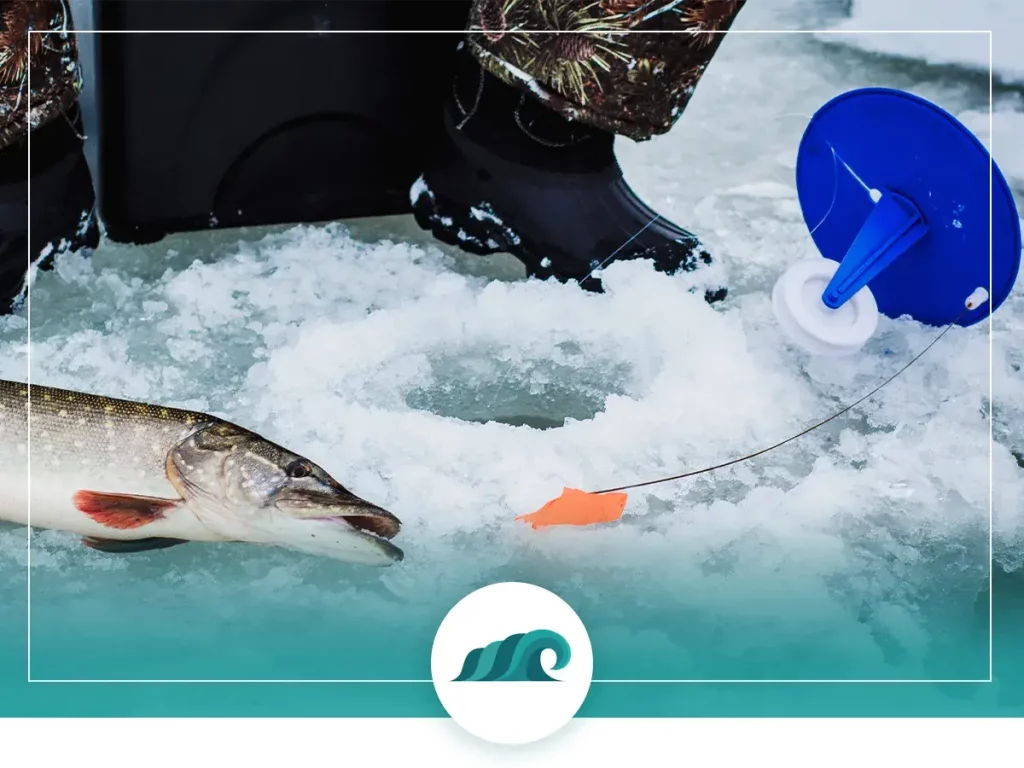
Tip up line differs significantly from typical rod and reel line. It’s generally made out of heavy-duty braided nylon/polyester, and has a diameter, and feel closer to heavy-duty twine than mono or braided line.
The large-diameter line enables you to easily grip the line as you pull in a fish, and gives in the durability and stretch needed to withstand the repeated freezing and thawing of ice fishing with tip ups.
The right pound test to use will depend on your target species, but in general, you’ll want to go with 20 to 30-pound test for pike, 8 to 10-pound test for walleye and lake trout, and 4 to 6 pound test for panfish.
While tip up line is durable and easy to grip, it’s also very easy for fish to spot under the ice. Tying a fluorocarbon or mono leader to the end of your tip up line is a must if you want to entice more bites.
A 5 to 10-inch long section of fluoro will give you the stealth needed to fool even the most line-shy fish, and is abrasion-resistant enough to use with a toothy fish like northern pike.
Bait and Hooks
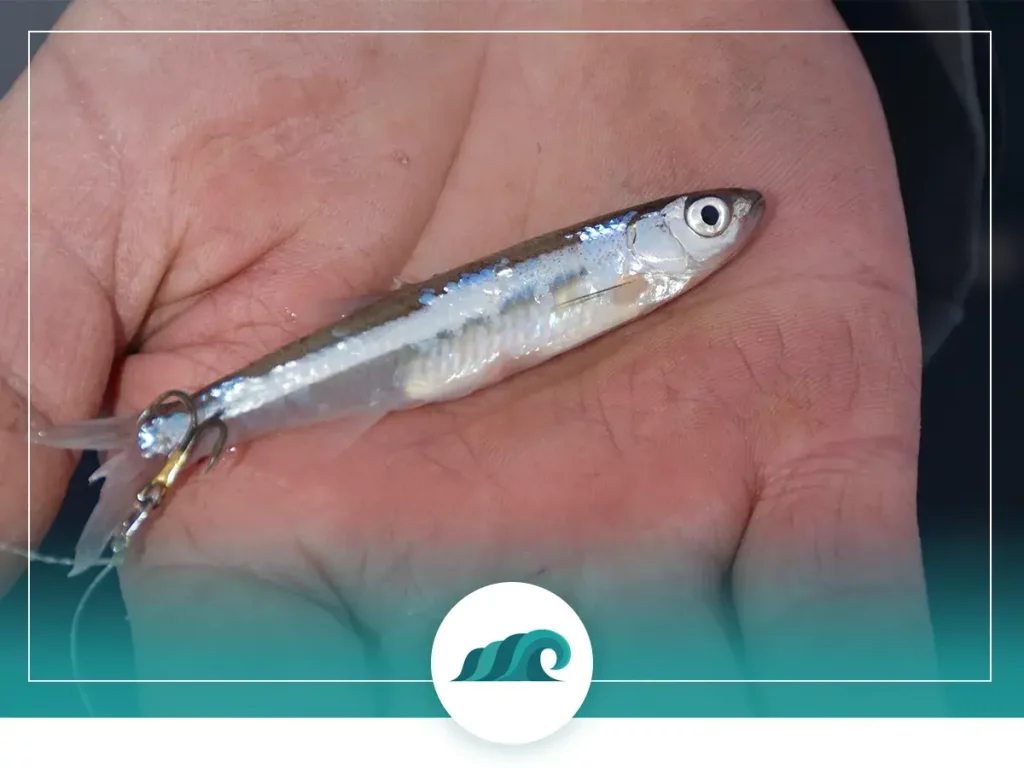
A wide variety of bait can be effective when ice fishing with tip ups, but if you can get your hands on live minnows and shiners, then do so. These baits work well for a variety of species and will work well when other baits just aren’t cutting it.
When fishing with live bait, make sure to add split shot or other sinkers to your rig. This will keep your bait at the right depth and location.
Nightcrawlers can also work well when fishing for smaller species like perch, crappie, and bluegill.
A word about hook size:
You’ll generally want to size down your hooks when ice fishing with tip ups. As your bait will be suspended and unattended, and passing fish will have plenty of opportunities to inspect your offering. If they spot your hook, they’ll be less likely to strike, so you want to go with the smallest hook you can when rigging your tip ups.[/su_box]
For smaller trout and walleye, a single treble hook embedded in the minnow’s back works well. For larger prey like pike and monster lakers, a quick-strike rig is the way to go.
Quick strike rigs are a highly effective way of attracting and triggering the pike bite. This setup typically uses two treble hooks spaced two inches apart, one near the tail, and one near the dorsal fin. This allows you to set the hook immediately without waiting and results in a higher hookup ratio than other methods.
Flag Visibility
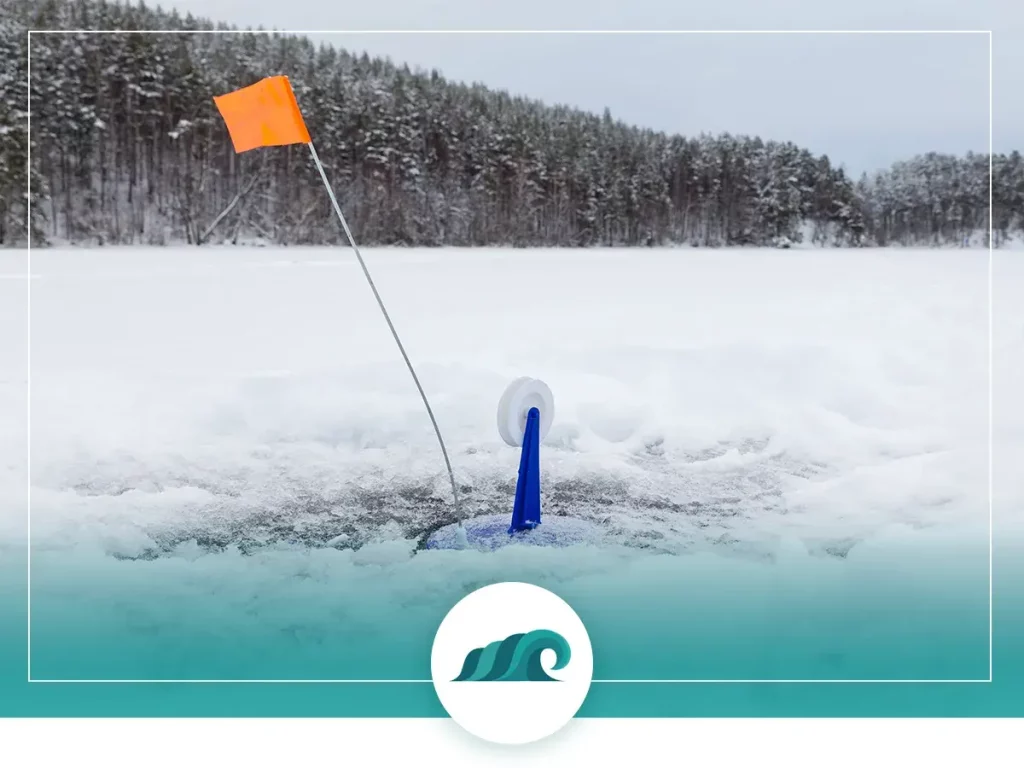
While you might not think of this right off the bat, good flag visibility is key to actually catching fish. If you don’t spot the flag in time, by the time you get to your tip up, odds are good that the fish is gone – along with your bait!
A brightly colored, easy-to-spot flag is a must. If you’re fishing around dawn or dusk, then adding an LED light to the end of your flag will make spotting it much easier.
If you’ve got multiple tip ups deployed, then keeping a good pair of binoculars at hand is a good idea. This will allow you to check all your tips ups in seconds, without needing to walk the rounds.
Adjusting Trigger Sensitivity
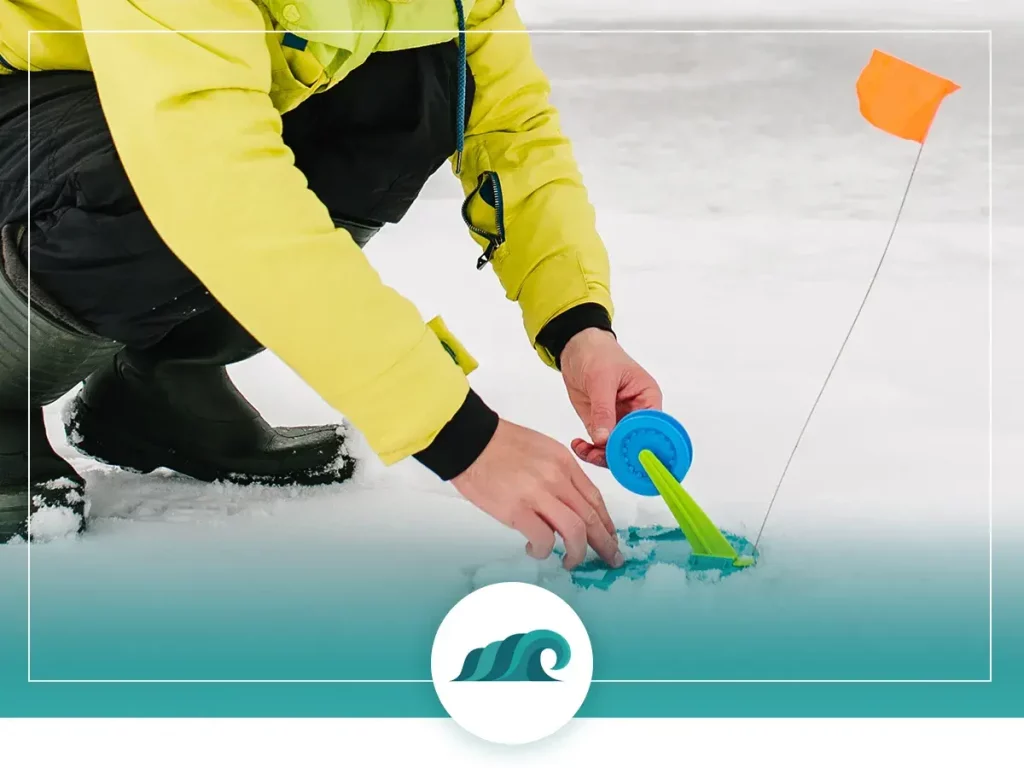
Most ice fishing tip ups are built with adjustable triggers. This means you can change the amount of resistance necessary to send up the flag.
You’ll need to play around with this a bit – as the right sensitivity will depend on a number of factors including your bait size, wind, water conditions, and your target species. As a general rule of thumb, you want to set the trigger to the minimum sensitivity needed.
Setting the Hook
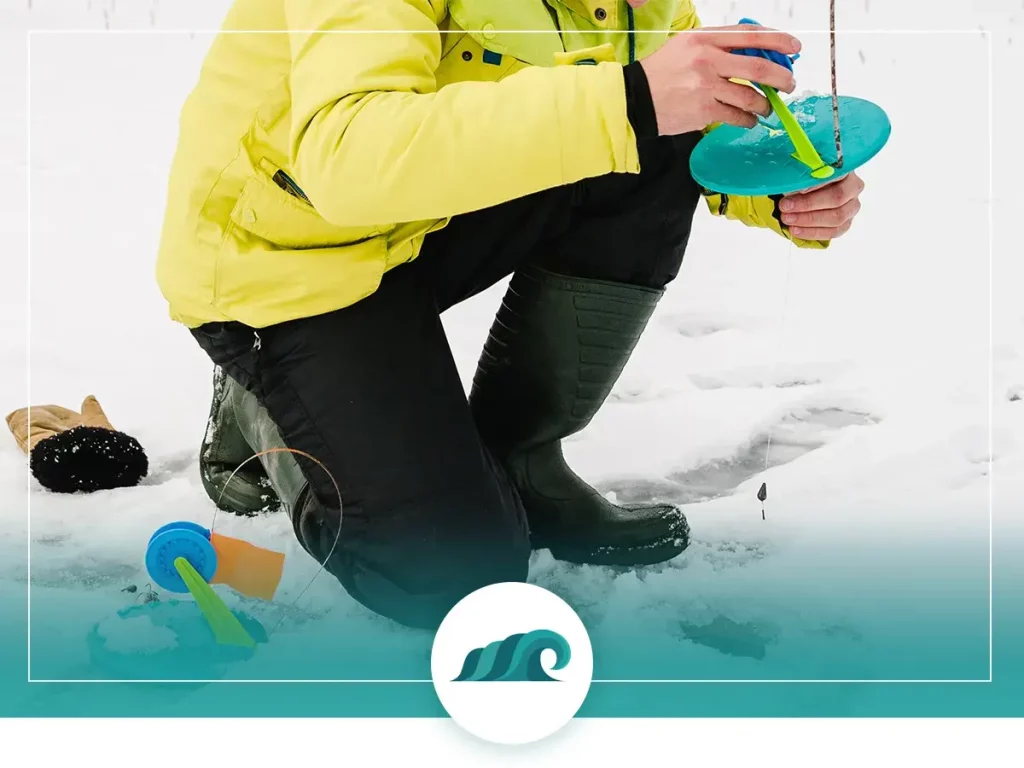
Once you spot a flag up – after a quick sprint over to your tip up – the next step is setting the hook.
Setting the hook with a tip up is a bit different than with a typical rod and reel. You’ll want to make sure the fish has actually swallowed your bait before yanking on the line. The flag may be triggered by an initial strike, but that doesn’t necessarily mean your fish has fully taken the bait.
Grip the line gently and feel for pressure on the line, which indicates the fish has got your bait in its mouth. You don’t want to swing for the fences; all that’s necessary is a sharp tug on the line to set the hook.
Now it’s time to get that bad boy to the surface. A hand-over-hand pull will get your fish to the surface in short order, but don’t be afraid to let the fish run if necessary. It goes without saying, but you’ll want a quality pair of gloves to get this done without rope burn.

